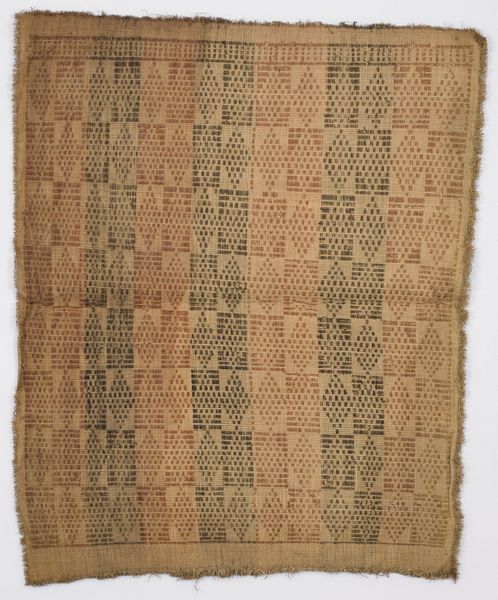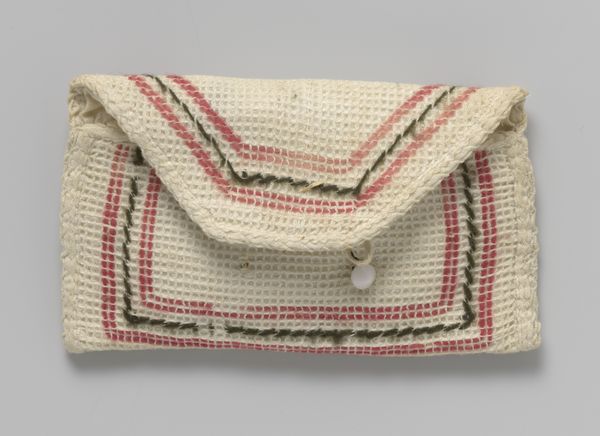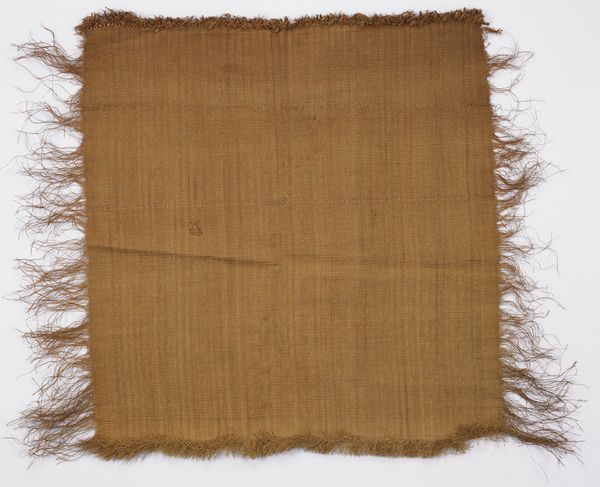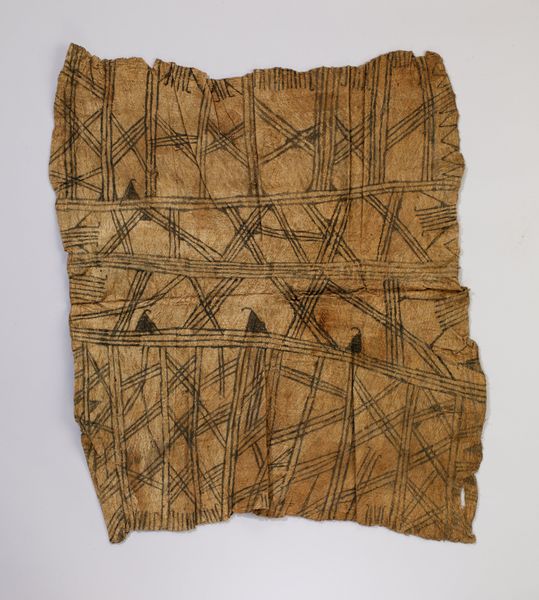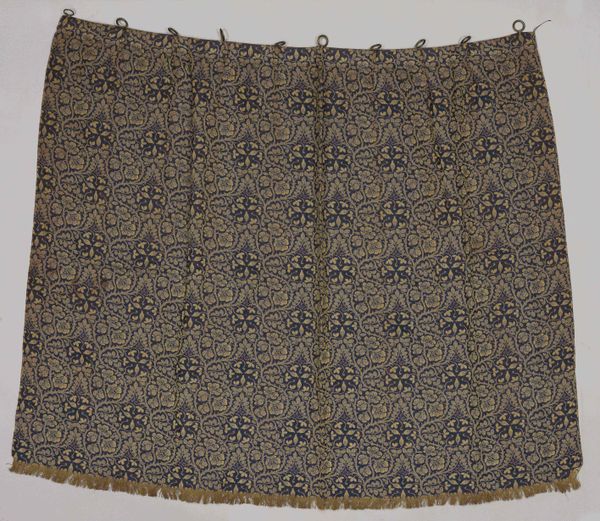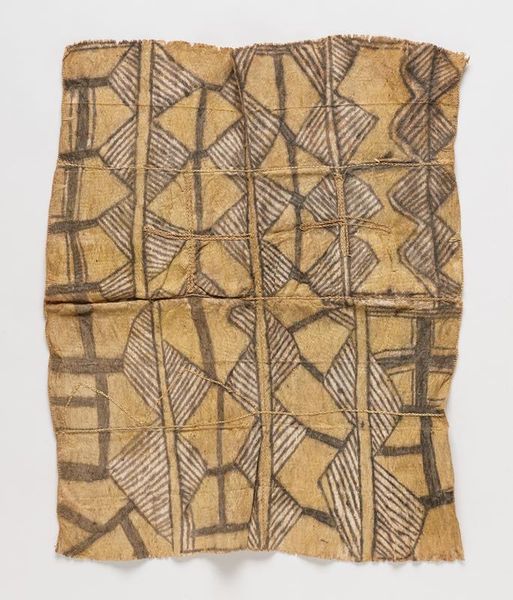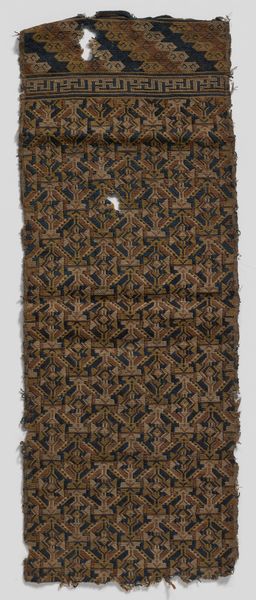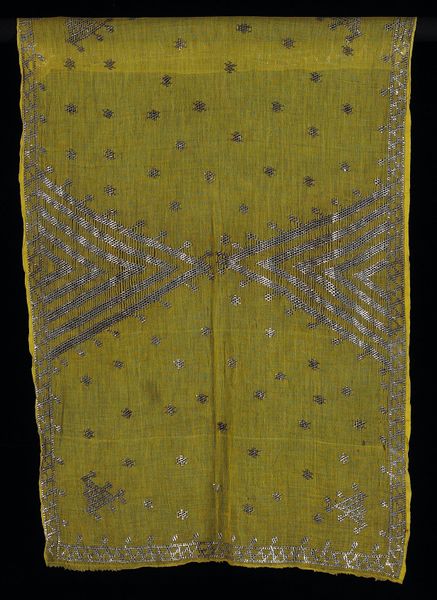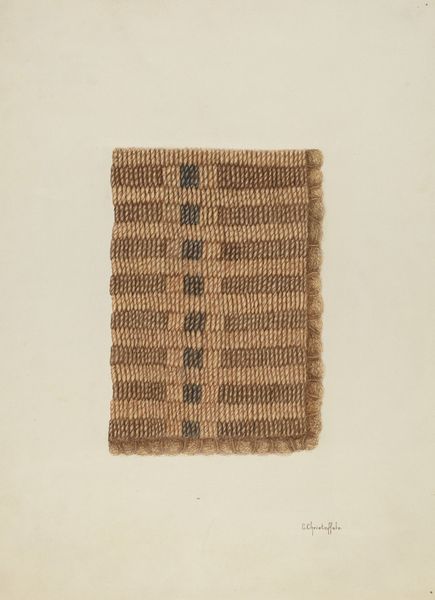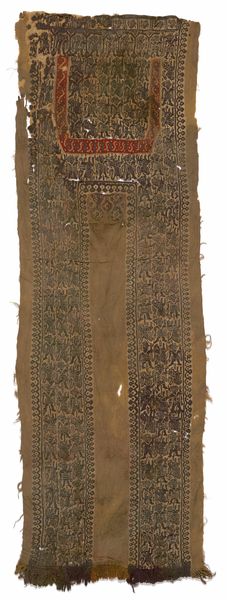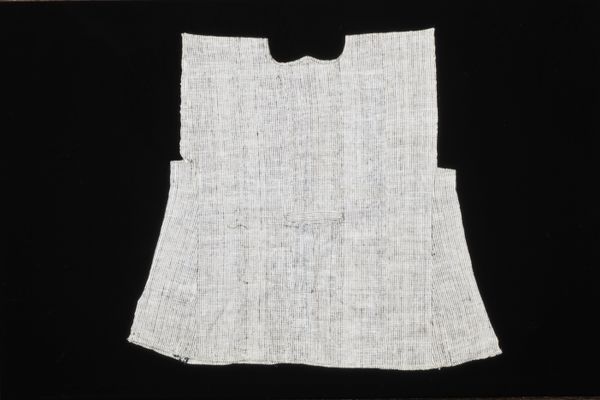
Huisjas van bedrukte zijde, gewatteerd en gevoerd met rode zijde c. 1690 - 1700
0:00
0:00
weaving, textile
#
fashion design
#
underwear fashion design
#
baroque
#
fashion mockup
#
weaving
#
textile
#
collage layering style
#
fashion and textile design
#
fashion based
#
wearable design
#
clothing photo
#
textile design
#
decorative-art
#
clothing design
Dimensions: length 154 cm, width 194 cm, width 100 cm, circumference 200 cm, circumference 250 cm, length 47 cm, circumference 62 cm
Copyright: Rijks Museum: Open Domain
This quilted silk robe, made by an anonymous maker, is a testament to the global exchange of materials and skills. The repeating geometric pattern on the outer layer of the robe was achieved through textile printing. The silk threads would have been carefully woven, then dyed, and finally assembled with a red silk lining. Imagine the number of steps, and the many hands involved, from the silkworm to the finished garment. The quilting adds warmth and structure, transforming flat fabric into three-dimensional form. The choice of silk speaks to luxury and trade. Silk production was, and remains, a labor-intensive industry. Yet, the relative simplicity of the robe's design and construction suggests it was made for everyday use within the home. Consider the relationship between the intimacy of the garment's function, and the global networks of labor and consumption that made its creation possible. This "house coat" challenges any strict separation of art, craft, and the everyday.
Comments
No comments
Be the first to comment and join the conversation on the ultimate creative platform.

